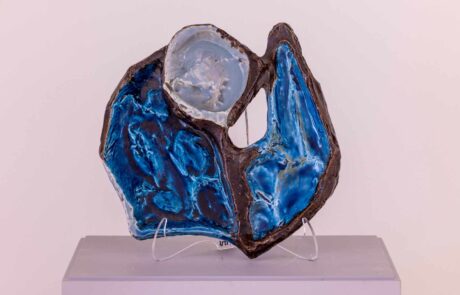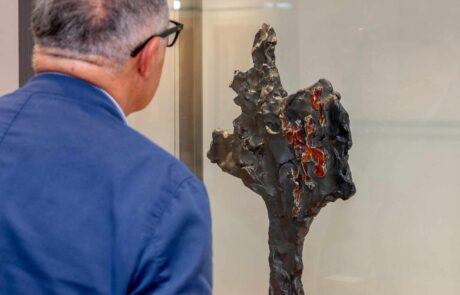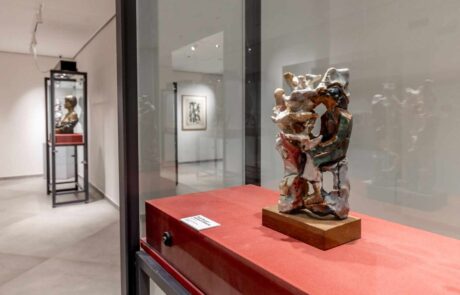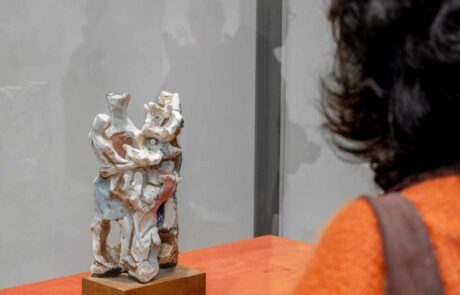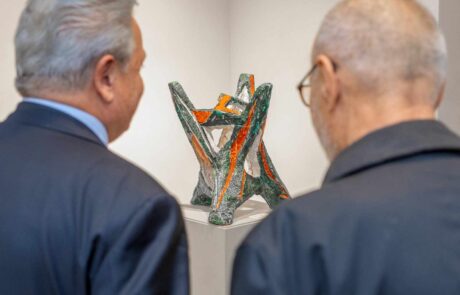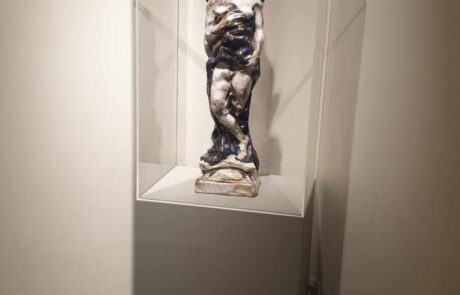Memories from the land years (1939-1968)
The artistic career of Leoncillo (born 1915 in Spoleto, died prematurely in Rome in 1968) spans the crucial phases of the art of his time: his debut in the sphere of the Roman schools, where he took Scipione’s expressionist lesson to its extreme consequences, up to the threshold of the Informal; the neo-Cubism of the post-World War II period, in which the violent material periphrasis subsided, without, however, becoming extinct, in a more ordered spatial organization; and the last and celebrated decade of his activity, in which the reconquest of a lost form takes place through radical acts such as “cutting.”
Of all these phases of Leoncillo’s artistic activity, the exhibition will present some significant works, such as the Caryatid of 1945, the Portrait of Mary of 1953, some large sculptures of his last production, such as the White Saint Sebastian of 1962, already acquired by the Gubbio Tourist Board through the Gubbio Sculpture Prize. A series of other works will complete an artistic journey characterized by an even maniacal stylistic coherence, since Leoncillo was non destructively grappling with ceramics as the exclusive material of his works and with the centrality of matter, of which he was a true forerunner well before the triumph, precisely materic, of the international informal. The exhibition will also present a large and rigorous selection of works on paper, selected to be related to the sculptures on display, thus grasping their nature not only as preparatory sketches but also as true variants. Since the intent of this exhibition will also be to grasp the constant of a typological obsession that runs through all phases of his work, and which manifests itself in the predilection for forms of marked verticality or otherwise of radical horizontality, in the latter case so original as to suppose its stimulus for the equally grounded works of artists of the next generation such as Kunellys and Pascali.
The exhibition is intended, therefore, as a 360-degree reconnaissance of the path of an artist now unanimously considered among the major protagonists of international sculpture of the past century, always linked to the dynamics (not only linguistic but also social and political) of his own years, but at the same time capable of escaping from any historiographical pigeonholing. After the exhibitions at the Galleria dello Scudo in Verona (2019) and at the Museo del Novecento in Florence (2022), with this Eugubina review Leoncillo’s work will be dropped into the context of the morphological and social (Umbrian) “landscape” in which he was born and which will always remain decisive for a work that even though it opens up to the most torrid temperatures of the twentieth-century avant-garde.
Edited by Enrico Mascelloni

